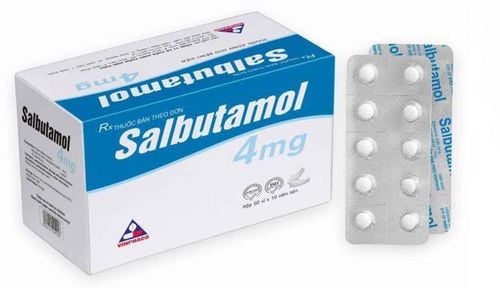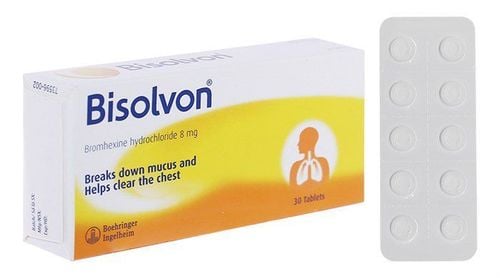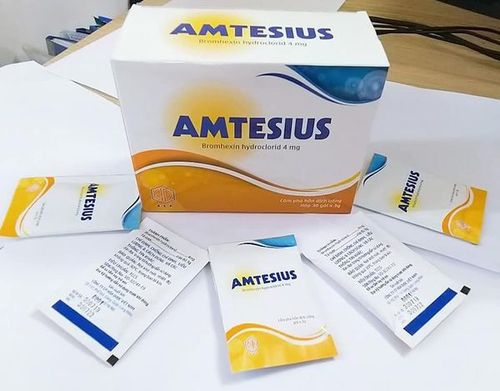This is an automatically translated article.
Salbules drug contains the active ingredient Salbutamol, prepared in the form of an aerosol solution, indicated in the treatment of severe acute bronchial asthma, chronic bronchospasm unresponsive to conventional therapy... Learn about the uses and notes when using Salbules through the article below.
1. What is Salbules?
Salbules medicine contains the active ingredient Salbutamol, prepared in the form of an aerosol solution. Each ampoule of Salbules contains 2.5mg of Salbutamol as Salbutamol Sulfate. The active ingredient Salbutamol belongs to a group of drugs that selectively act on β2 receptors in bronchial smooth muscle, vascular smooth muscle, uterus and little effect on β1 receptors of heart muscle, so it has bronchodilator and spasmolytic effects. uterine smooth muscle.
Salbules drug is indicated in the following cases:
Severe acute bronchial asthma; Chronic bronchospasm unresponsive to conventional therapies.
2. Dosage of the drug Salbules
Salbules belongs to the group of prescription drugs, the dose of medicine used is prescribed by the treating doctor based on the disease condition. Patients absolutely do not arbitrarily use Salbules without a doctor's prescription.
Some recommendations on Salbules dosage are as follows:
Adults: Use 1 ampoule (equivalent to 2.5mg Salbutamol) inhaled through the mouth through a suitable nebulizer, inhale until the aerosol particles are clear. ampoules (average takes about 10 minutes). In some cases, the dose may have to be increased depending on the medical condition; Children: The starting dose of Salbules in children under 12 years old is 2.5ml (equivalent to 2.5mg Salbutamol). The dose is then adjusted depending on the condition of the patient. For children over 12 years old use the same dose as adults. Neonates younger than 18 months have not demonstrated clinical efficacy with aerosol salbutamol. Patients should note that Salbules is only used by inhalation through the mouth under the guidance of medical staff, absolutely do not inject or swallow the drug solution.
3. Side effects of the drug Salbules
Salbules may cause some common side effects including tremor, restlessness, heart palpitations, headache, cramps, nervousness, nausea, insomnia, dizziness, weakness, angioedema , urticaria, oropharyngeal edema, hypokalemia and blood pressure. In some patients, Salbules can cause some cardiovascular changes such as palpitations, peripheral vasodilation.
Patients need to notify their doctor if they experience unwanted effects during treatment with Salbules.
4. Notes when using Salbules
Contraindicated to use Salbules in patients with a history of hypersensitivity to Salbutamol or any of its ingredients.
Some precautions when using Salbules are as follows:
Do not use Salbules as the sole treatment or main treatment regimen in patients with severe and unstable asthma, requiring regular medical evaluation. frequently on disease progression; Patients who are being treated with Salbules at home should inform their doctor if the effectiveness of the drug does not respond. Adverse reactions can occur with an overdose of the drug, so the adjustment and increase in the dose of Salbules must be prescribed by the doctor; Patients being treated with salbutamol can also take a short-acting bronchodilator to relieve symptoms. Asthma can be relieved immediately and can last longer. In case the patient needs to take a higher-than-normal dose of medication, it may be a sign of instability of the asthma condition, it is necessary to re-evaluate the treatment regimen and consider adding anti-inflammatory drugs such as corticosteroids... ; Like other β-adrenergic agonists, Salbutamol can induce reversible metabolic changes such as hyperglycemia... In diabetic patients treated with Salbules may lead to irreversible hyperglycemia. with diabetic ketoacidosis. Concomitant use with anti-inflammatory corticosteroids aggravates this condition; Use caution when using Salbules in patients with cardiovascular disease (arrhythmia, coronary insufficiency, hypertension), patients with hyperthyroidism, patients with reactions to sympathomimetic amines; Treatment with salbutamol inhaled by mouth may lead to immediate hypersensitivity reactions such as edema, urticaria, rash, bronchospasm, anaphylaxis, rash, oropharyngeal edema; For pregnant women: There is no evidence of teratogenicity, however, the use of Salbules in this population should be prescribed and supervised by a physician based on benefits and risks; Lactation: It is not known whether Salbutamol is excreted in human milk, however animal studies have demonstrated the tumorigenic potential of Salbutamol when administered to lactating women. Therefore, breast-feeding should be discontinued during treatment with Salbules or treatment with Salbules during breast-feeding.
5. Drug interactions
Do not use Salbules concurrently with sympathomimetic drugs because of the risk of cardiovascular toxicity.
Caution should be taken when using Salbules in patients being treated with MAO inhibitors, tricyclic antidepressants because of the effect of Salbutamol on the vascular system.
Drug interactions occur that reduce the therapeutic effect of Salbules, increasing the risk of unwanted effects. Therefore, to ensure safety and effectiveness, patients need to inform their doctor about any medications and supplements they are taking before taking Salbules.













